Sancocho is a hearty stew loaded with root veggies and tender shredded chicken in a silky smooth flavorful broth. Enjoy it for lunch or dinner as a comfort meal on a cold winter day.
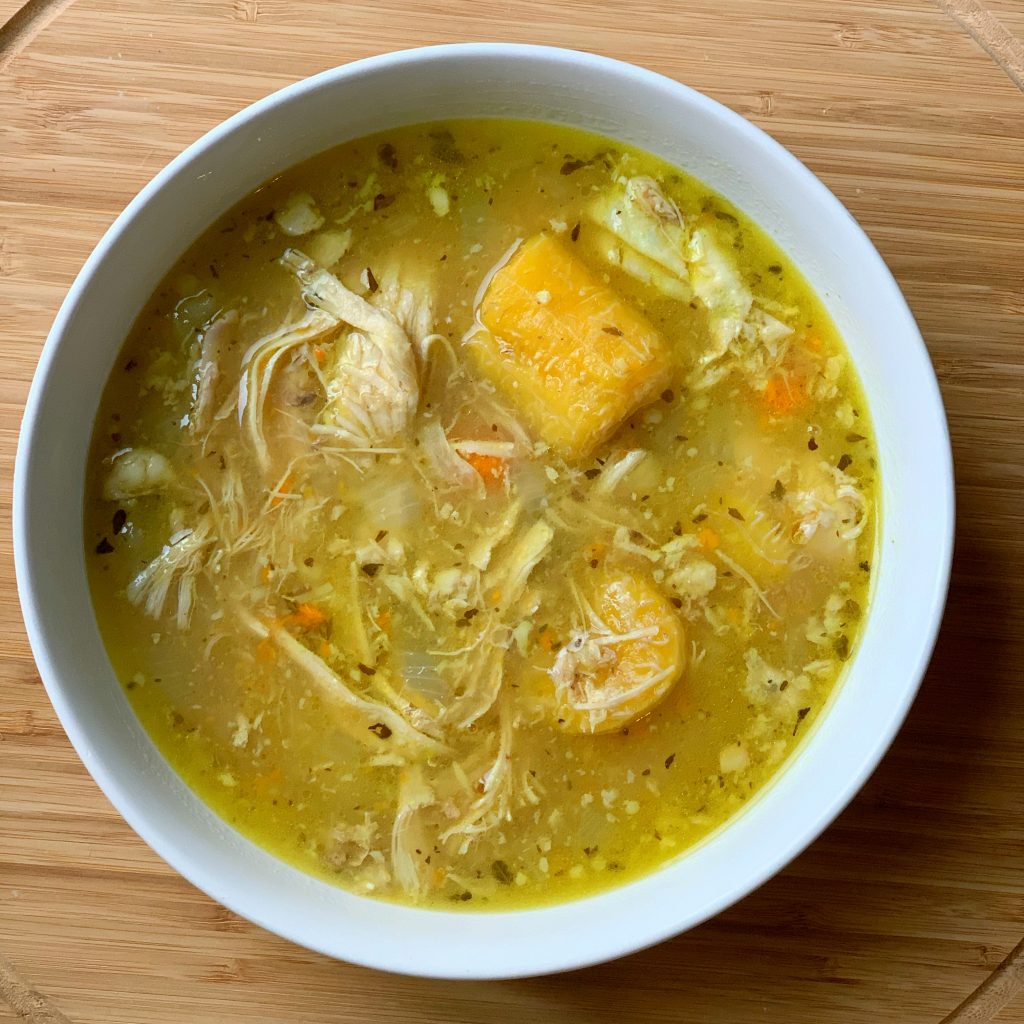
Sancocho
I was first introduced to Sancocho 15 years ago, when I worked in the Garment District in New York City. There was an amazing Dominican (Dominican Republic) restaurant a few blocks away from my office and it served the most delicious sancocho. Their sancocho was chicken based and had root veggies and noodles with a rich cassava broth (cassava cooked until tender and melted) and was the perfect “pick me upper” lunch on a dreary New York City winter day.
So now, whenever I want something warm and comforting for dinner, I make sancocho! But instead of using a large pot, I use my Instant Pot to make pure magic.
Why You’ll Love This Sancocho Recipe
- Versatile: Sancocho recipes vary from region to region and can be adapted to suit your taste preferences. You can customize the ingredients and seasonings to create a version that you love.
- A Family Favorite: This one pot meal is a guaranteed way to get everyone around the dinner table. It’s like an elevated chicken soup, that warms you up from the inside out!
- Great for Meal Prep: It freezes really well and is great for meal prepping. Make a big pot on Sunday, portion into zip top bags and freeze!
What is Sancocho?
Sancocho is a broth in many Latin American cultures. It loosely translates to mean soup but if you ask Latin Americans about Sancocho they all have varying descriptions of what that soup looks and tastes like. But it commonly includes meat, broth, veggies, and root vegetables.
It is a staple in Puerto Rico, Dominican Republic, and Colombia but the dish originated in Africa.
Sancocho Ingredients
Find most of what you need at your local Caribbean or Latin market.
- Whole chicken: Cut in half.
- Aromatics: I use yellow onion, garlic, and dried thyme.
- Celery: Roughly chopped.
- Seasoning: I use a simple mix of McCormick’s Montreal Steak Seasoning, salt, and ground turmeric (for color).
- Root Vegetables: This soup is a great “kitchen sink” type of soup. Anything in the tuber, root vegetable family goes. I added yuca (cassava), sweet potatoes (two kinds, white/golden and regular), yams, and yellow plantains (green plantains taste too similar to sweet potatoes) to my soup. These starches naturally thicken the broth.
- Water: This is the liquid base for what will become your chicken broth.
See recipe card for quantities.
How to Make Sancocho
It’s all in the broth!
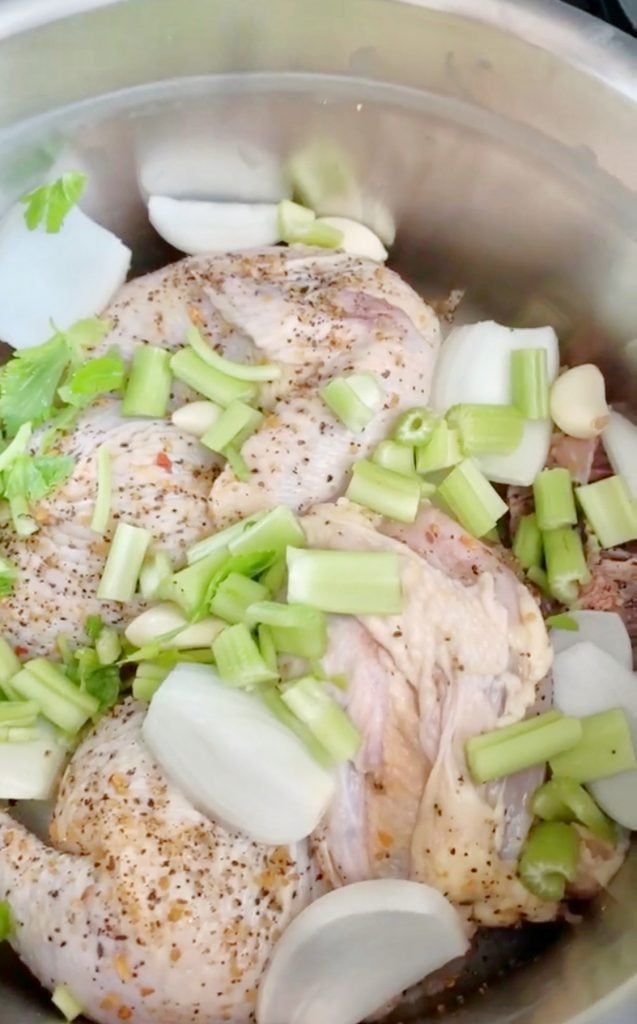
To season my chicken I used a mixture of fresh and dry ingredients. Lots of onion, fresh garlic, some celery that was on its last leg and two table spoons of McCormick’s Montreal Steak Seasoning (yes you read that right). The McCormick’s seasoning is gluten and sugar free and Whole30 compliant according to the ingredients list. Please note however it does have “natural flavor” listed as an ingredient which some Whole30’ers like to avoid.
Once the chicken pressure cooked to a lovely bone broth, I used two forks and shredded the flesh away from the bones. Feel free to remove the chicken and do this part on a cutting board. You may also choose to discard the bones, but I wanted all that rich flavor that comes from the bones to remain in the pot so I kept everything in the soup.
Root Veggies Make this Carribean Soup a Winner
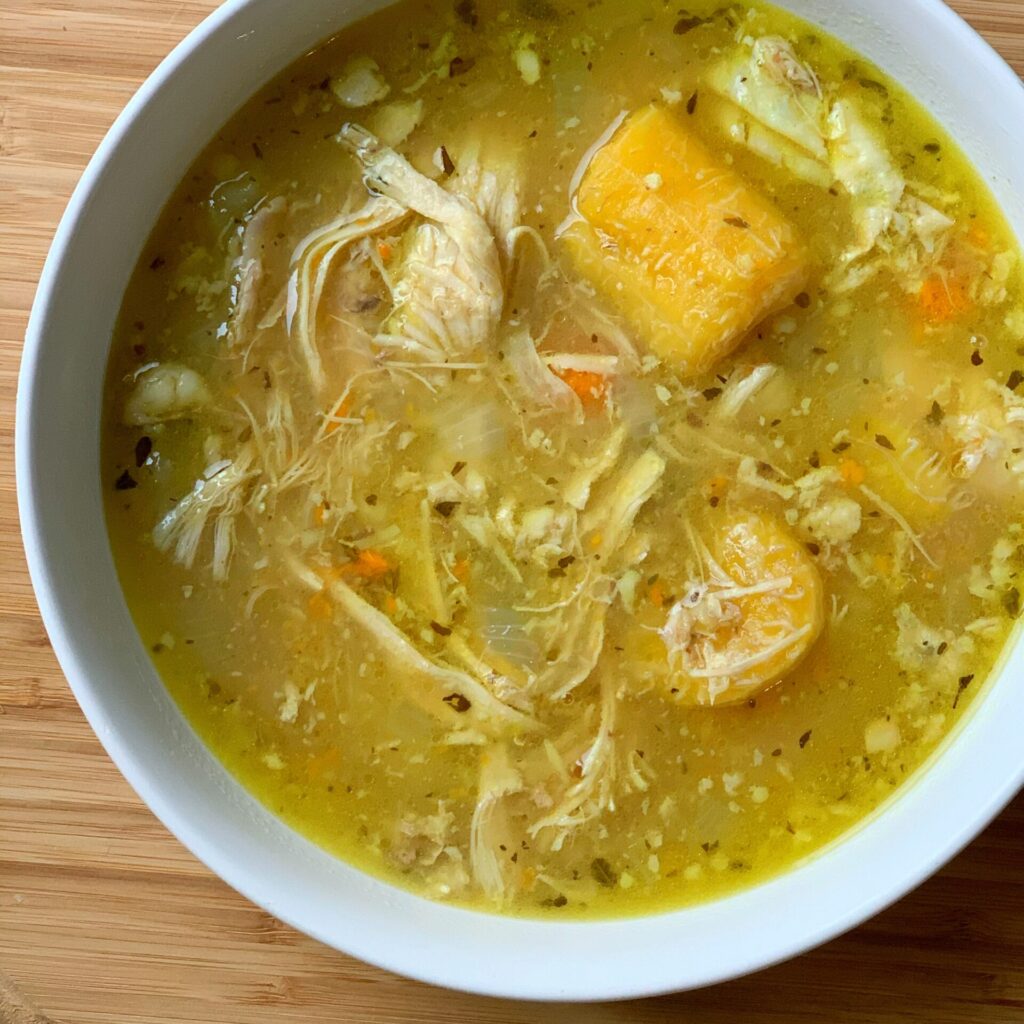
Cooking the cassava until it is soft and almost melts away adds such a rich and comforting depth of flavor to the soup that it reminded me of that Sancocho I got in New York. You can also do this with white potatoes. Sometimes I add whole white potatoes to thicken my chicken soups. Cook them until tender, remove them from the soup, crush them, and add them back into the soup as a thickener for the broth. It really gives the broth a heartiness that sometimes chicken soup is lacking.
Storage
Once the stew has completely cooled, store leftovers in an airtight container in the fridge for up to 5 days. For longer storage, freeze it for up to 3 months.
Thaw it overnight in the fridge and to reheat, microwave it or reheat leftovers over medium heat on the stove. If the stew gets too thick once its cooled, just add a splash of water or broth to loosen it up.
Recipe Variation
- Meat: You can use beef or pork instead of chicken, or use a mix of different meats.
- Sofrito: Many sancocho recipes include a seasoning blend known as sofrito. It’s a pureed mix of fresh peppers, cilantro, tomatoes, and garlic.
- Spicy: Add wiri wiri peppers or habanero peppers for a kick of heat.
- Extra Veggies: Make this stew even chunkier and more nutritious by adding ingredients like green beans, corn, cabbage, and bell peppers.
Tips for the Best Sancocho
- The key to great sancocho is in the broth. I needed a chicken bone broth for this recipe so I cooked a whole chicken in my instant pot for an hour before adding the remaining ingredients.
- This is not a quick soup. Traditionally it is cooked on the stove top for hours. The instant pot cuts some of that time down but it still takes time. Think of this as a delicious labor of love.
Frequently Asked Questions
The main difference between the two dishes is the sofrito and tomato sauce added to the Puerto Rican variation for a more robust flavor.
White rice is commonly served with the soup.

Sancocho {Whole30, Instant Pot, Paleo}
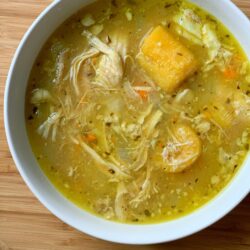
Equipment
Ingredients
- 1 whole chicken cut in half
- 1 yellow onion roughly cut
- 6-8 cloves of garlic
- 1 teaspoon of dried thyme
- 1-2 stalks of celery roughly chopped
- 2 tablespoons of McCormick’s Montreal Steak Seasoning
- 1.5 lbs of Cassava peeled and cut into 2 inch pieces (or store bought frozen)
- 1 white/golden sweet potato peeled and cut into 2 inch pieces
- 2 yellow plantains peeled and cut into 2 inch pieces
- 1 sweet potato peeled and cut into 2 inch pieces
- 1 yam peeled and cut into 2 inch pieces
- Additional salt to taste if needed
- A pinch of ground turmeric less than 1/4 teaspoon for color
- 4-5 cups of water
Instructions
- Add the chicken, onions, garlic, celery, dried thyme and McCormick’s Montreal Steak Seasoning to your instant pot and enough water to cover the chicken (about 4-5 cups of water).
- Seal up and pressure cook on high for 1 hour, following your instant pot instructions for pressure cooking
- After an hour of pressure cooking, release the steam then add the cassava (if using)
- Seal up and pressure cook for 5 minutes (does not include time for the Instant Pot to pressurize)
- Then release the steam, add the remaining root veggies and additional salt if need
- Next seal up and cook on high pressure for another 3 minutes (does not include time for the instant pot to pressurize)
- Then release the steam, give it a good stir and it is ready
- Alternatively after step 2 above, you can just put the instant pot on sauté add the cassava, then cook until the cassava is soft, then add the other veggies and continue to cook on sauté until those are soft. This takes between 20 to 30 minutes
- This soup is best served hot!
Notes
Nutrition
The information listed in the recipe card is an estimate provided by an online nutrition tool. The tool evaluates ingredient names and amounts then makes calculations based on the number of servings listed for the recipe. It is provided as a general guideline and not as a precise calculation. For precise nutrition information please feel free to add the ingredients to your preferred nutrition calculator or consult a doctor or licensed nutritionist.


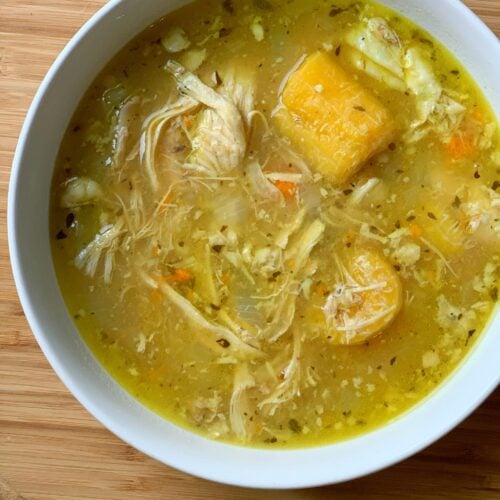
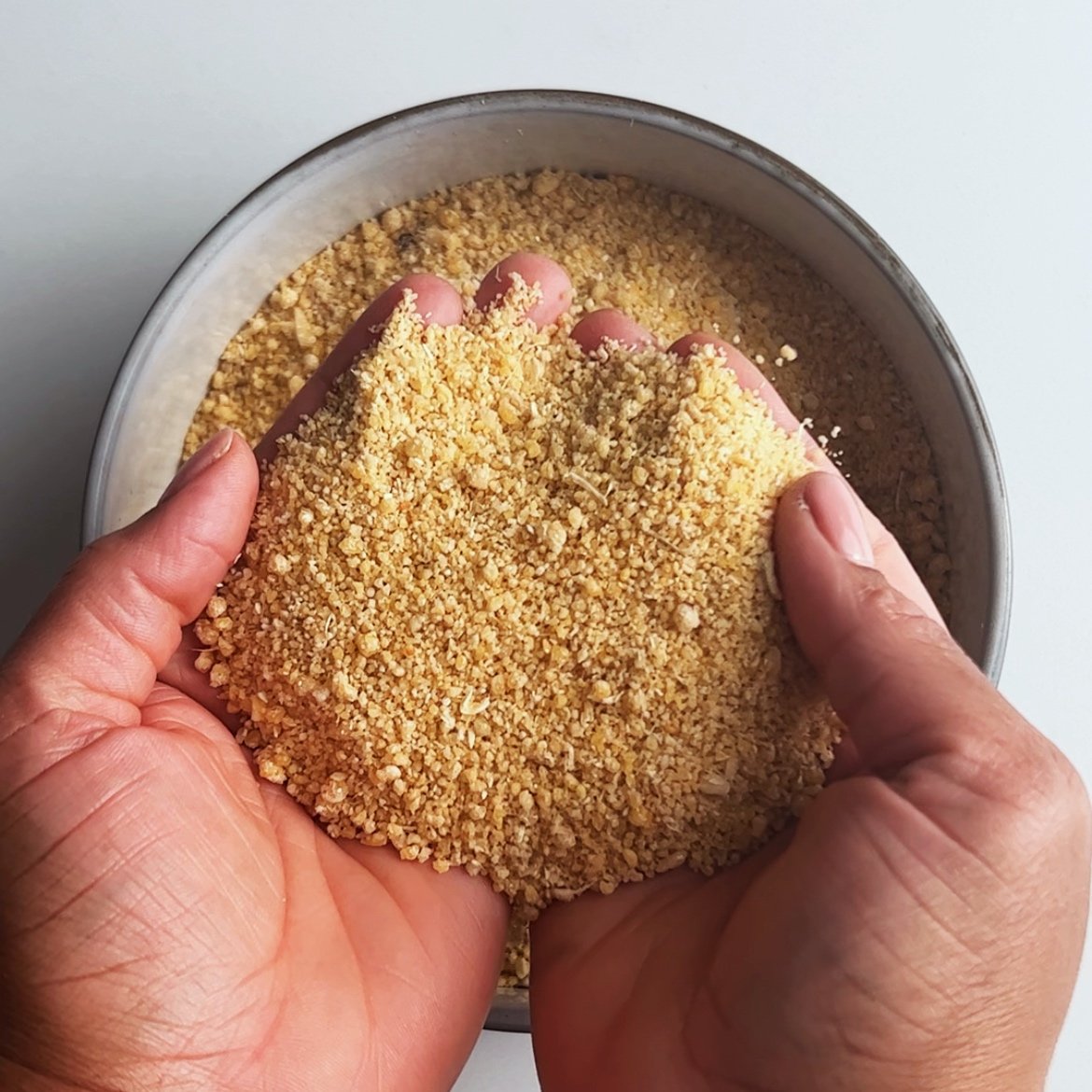 Farine
Farine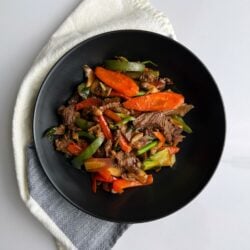 Steak and Veggies Stir Fry (Whole30)
Steak and Veggies Stir Fry (Whole30) Gluten Free Pinwheels
Gluten Free Pinwheels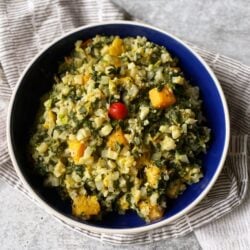 Callaloo Cauliflower Cook-Up Rice
Callaloo Cauliflower Cook-Up Rice
Dr. Mark D. Woodhull Says
Colombian (Santiago de Cali, Valle de Cauca) Sancocho has:
Chicken legs
Yuca (Casava)
Corn on the Cob
Platano Verde (green plantain)
Papas (potatoes)
Spanish Yellow Onion or optional: Green Onion (or both)
Cilantro
Garlic
Salt & Pepper
Cumin
Achiote (for color – optional)
Angie Says
Great effort! However, real Dominican sancocho does not have sweet potatoes or yellow plantains. It does however, have green plantains and malanga or yautia. Also no Yam but Kabocha squash or calabaza. Try making a good sofrito instead of McCormick Montreal seasoning for good authentic flavor!
Kris Says
Hi 🙂
Can I use beef for this? As a substitute for the chicken or with chicken?
Thanks